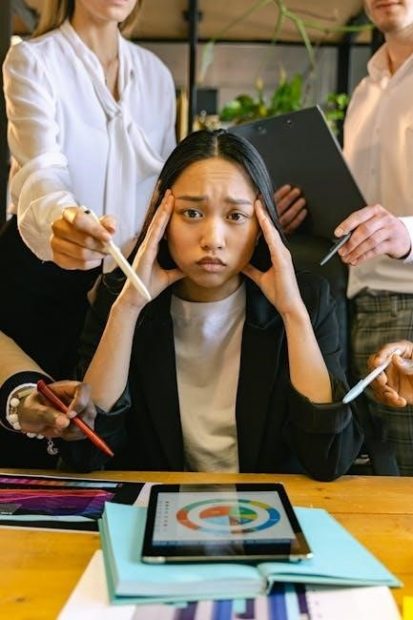Procion MX dyes are a popular choice for fabric dyeing due to their versatility and vibrant colors. They require soda ash for natural fibers and offer endless color possibilities;
Brief History of Procion MX Dyes
Procion MX dyes are fiber-reactive dyes developed in the mid-20th century, becoming popular in the 1960s and 1970s for their vibrant, colorfast results. They bond chemically with natural fibers like cotton and linen, ensuring durability. Initially used in industrial textile dyeing, they gained popularity among artisans for their versatility and ability to create rich, long-lasting colors. Their introduction revolutionized fabric dyeing, offering a wide range of hues and techniques that remain widely used today in both craft and commercial settings.
Benefits of Using Procion Dyes
Procion MX dyes offer vibrant, long-lasting colors with excellent colorfastness. They work best on natural fibers like cotton and linen. These dyes are highly versatile, allowing for various techniques such as immersion, tie-dye, and direct application. The ability to mix colors creates an unlimited palette, making them ideal for artistic projects. Their effectiveness requires proper preparation, like using soda ash, ensuring durable and professional-looking results. This makes Procion dyes a favorite among crafters and textile artists for creative and reliable fabric dyeing.
Materials Needed for Procion Dyeing
Procion MX dye powders, soda ash, gloves, buckets, measuring cups, spoons, running water, and protective clothing are essential for a safe and effective dyeing process.
Essential Supplies
Procion MX dye powders, soda ash, gloves, buckets, measuring cups, spoons, protective clothing, and running water are essential. Soda ash is crucial for fixing dyes on natural fibers, while gloves and protective gear ensure safety. Measuring tools help in precise mixing, and buckets are necessary for soaking and dyeing. These supplies ensure a safe and effective dyeing process, producing vibrant and long-lasting colors on fabrics like cotton and linen.
Optional Tools
Optional tools include brushes, spray bottles, squeegees, and shibori or resist tools for unique patterns. Brushes allow for direct dye application, while spray bottles create subtle gradients. Squeegees can spread dye evenly, and resist tools enable intricate designs. These tools enhance creativity and precision, offering diverse techniques for achieving specific effects in your dyeing projects, from tie-dye to layered colors, and are perfect for experimenting with advanced methods and artistic expressions.
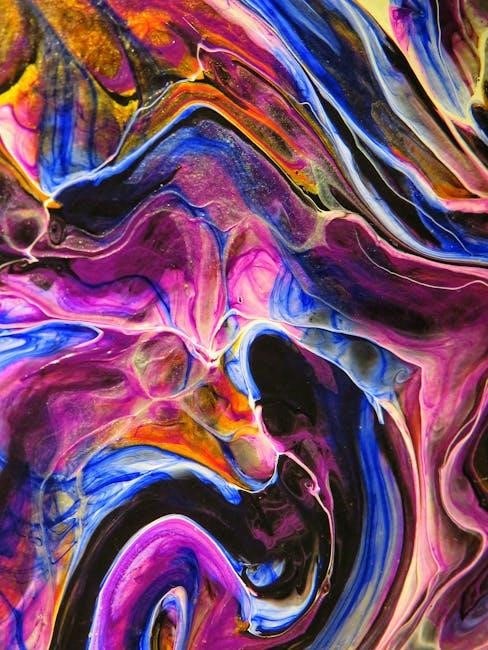
Preparing Your Workspace
Set up a well-ventilated area with protective coverings like plastic or newspaper. Gather essential supplies and organize them for easy access during the dyeing process to ensure efficiency.
Safety Precautions
Always wear protective gloves, goggles, and a mask when handling Procion dyes to avoid skin and eye irritation. Work in a well-ventilated area to prevent inhaling dye particles. Keep dye powders and solutions away from children and pets. Avoid eating or drinking while dyeing. If skin contact occurs, rinse thoroughly with water. In case of eye exposure, flush with water and seek medical advice. Proper ventilation and protective gear are essential for a safe dyeing experience.
Setting Up Your Workspace
Arrange your workspace in a well-ventilated area, preferably outdoors or near open windows. Cover surfaces with plastic sheets or drop cloths to protect against spills. Organize essential supplies like dye powders, soda ash, gloves, and buckets. Ensure all tools are within easy reach to streamline the dyeing process. A clean and organized workspace helps prevent accidents and makes the dyeing experience more efficient and enjoyable. Proper setup is key to achieving optimal results with Procion dyes.
Fabric Preparation
Fabric must be washed and dried before dyeing to remove finishes. Soak in soda ash solution to open fibers, ensuring better dye absorption and vibrant colors.
Washing and Drying Before Dyeing
Always wash fabric before dyeing to remove dirt, oils, and finishes. Use hot water and mild detergent. Dry thoroughly to ensure even dye absorption. Natural fibers like cotton and linen require this step for vibrant results. Synthetic fibers may not need washing but still benefit from pre-drying. Skipping this step can lead to uneven color and poor dye adhesion. Clean fabric ensures optimal dye penetration and long-lasting color.
Soaking Fabric in Soda Ash
Soak fabric in a soda ash solution to open fibers and enhance dye absorption. Mix 10g of soda ash per liter of warm water. Submerge fabric, ensuring full coverage, and soak for 1-2 hours. This step is crucial for natural fibers like cotton, linen, and hemp; After soaking, gently squeeze out excess water without rinsing. Fabric is now ready for dyeing, as soda ash remains active on the surface, promoting vibrant color bonding. Proper soaking ensures deep, even dye penetration.
Application Methods
Explore various application methods such as immersion dyeing, tie-dye, shibori, and direct application using brushes or spray bottles for unique fabric designs.
Immersion Dyeing
Immersion dyeing involves submerging fabric into a dye bath for a specific time. Pastel shades typically take 15 minutes, while deeper hues require 30 minutes. Gently agitate the fabric every few minutes to ensure even color distribution. This method is ideal for achieving uniform colors and works best with natural fibers like cotton and linen. Proper preparation with soda ash ensures the dye binds effectively to the fabric, resulting in vibrant, long-lasting colors.
Tie-Dye and Shibori Techniques
Tie-dye and shibori involve folding, twisting, or binding fabric to create unique patterns. Procion dyes are applied directly or through immersion, with soda ash ensuring color bonding. Ice dyeing is a variation where ice melts, distributing dye for soft, watercolor effects. These methods work best on natural fibers like cotton and linen, producing vibrant, long-lasting results. Proper preparation and technique are key to achieving intricate, one-of-a-kind designs with Procion MX dyes.
Direct Application with Brushes or Spray Bottles
Direct application allows precise control over color placement. Mix dye powder with water to create a paste, then apply using brushes or spray bottles. This method is ideal for detailed designs or patterns. Ensure fabric is pre-soaked in soda ash for optimal color bonding. Spray bottles create soft, blended effects, while brushes enable intricate, hand-painted details. This technique works beautifully on natural fibers, resulting in vibrant, professional-looking results with Procion MX dyes.
Mixing Procion Dyes
Procion MX dyes are fiber-reactive, requiring precise mixing for vibrant results. Combine dye powder with water to achieve desired hues, following color theory basics for consistency and creativity.
Color Theory and Mixing Basics
Color theory is essential for achieving desired hues with Procion MX dyes. Primary colors (red, blue, yellow) mix to create secondary colors (orange, green, purple). By adjusting ratios, you can produce a wide spectrum of shades. Pastel tones are created by adding white or light base colors. Always measure dyes accurately to ensure consistent results. Use a color mixing chart for guidance. Experiment with small batches to test colors before large-scale projects. This foundation ensures vibrant, predictable outcomes in your dyeing process.
Measuring and Mixing Dye Powders
Accurate measurement is crucial for consistent results. Use a digital scale or measuring spoons to portion dye powders. Mix 1 teaspoon of dye with a small amount of hot water to create a paste, ensuring no lumps form. Gradually add more water to achieve the desired concentration. For deeper colors, increase the dye-to-water ratio. Always mix in a well-ventilated area and allow the mixture to sit for a few minutes before use to activate the dye fully.
Creating Pastel Shades
To achieve soft pastel shades with Procion MX dyes, start by using minimal dye powder. Mix 1 teaspoon of dye with a small amount of hot water to create a paste, then gradually add more water to dilute the mixture. A 1:10 dye-to-water ratio is a good starting point for lighter hues. Ensure the fabric is well-soaked in a soda ash solution to enhance color binding. For even softer tones, increase the water quantity or add a touch of white vinegar to the dye bath. Experiment with ratios and observe results to refine your technique.
Dyeing Techniques
Procion dyeing involves immersion, tie-dye, or direct application. Techniques vary, but key factors include color intensity, fabric movement, and dye-fixing times for optimal results.
Immersion Dyeing Process
Immersion dyeing involves submerging fabric in a dye bath. Combine Procion dye with warm water and soda ash for natural fibers. Soak fabric in the mixture for 15-30 minutes, stirring occasionally to ensure even color distribution. Pastel shades require shorter soaking times, while deeper colors need longer immersion. Always wear protective gloves and work in a well-ventilated area to ensure safety.
Temperature and Time Considerations
Temperature and time are crucial for achieving desired results with Procion dyes. Ideal dyeing occurs at 100°F to 104°F (38°C to 40°C). Pastel shades require a 15-minute soak, while deeper colors need 30 minutes. Exceeding these times may not improve color intensity and could damage fabric. Consistent temperature and agitation ensure even dye distribution. Monitor closely to avoid over-dyeing, as this can lead to uneven colors or fabric degradation.
Agitation and Movement
Agitation plays a key role in achieving uniform color distribution when using Procion dyes. Gently stir the dye bath every few minutes to ensure the fabric is evenly saturated. Movement helps prevent uneven dye uptake, especially for immersion dyeing. Avoid excessive agitation, as it can cause fabric wear or inconsistent color. For vibrant results, maintain steady, gentle movement throughout the dyeing process to ensure all fibers interact fully with the dye solution.
Fixing and Washing
Fixing ensures dye binds to fabric, while washing removes excess dye for vibrant, long-lasting results. Use mild detergent to maintain color integrity.
Fixing the Dye
Fixing the dye is crucial for ensuring color longevity. After dyeing, rinse fabric gently in cold water until excess dye is removed. Then, soak it in a soda ash solution for 4-6 hours to fix the colors. This step ensures the dye binds permanently to the fabric fibers, resulting in vibrant, wash-fast colors. Proper fixing prevents fading and maintains the integrity of your design.
Rinsing and Washing
After fixing the dye, rinse the fabric thoroughly in cold water to remove excess dye. Use a mild detergent for the first wash, separating dyed fabrics from others to prevent color transfer. Gently agitate by hand or use a delicate cycle. Avoid hot water, as it may cause colors to bleed. Air-dry or tumble dry on a low setting to preserve vibrancy. For delicate items, air drying is recommended. This ensures long-lasting, fade-resistant results.
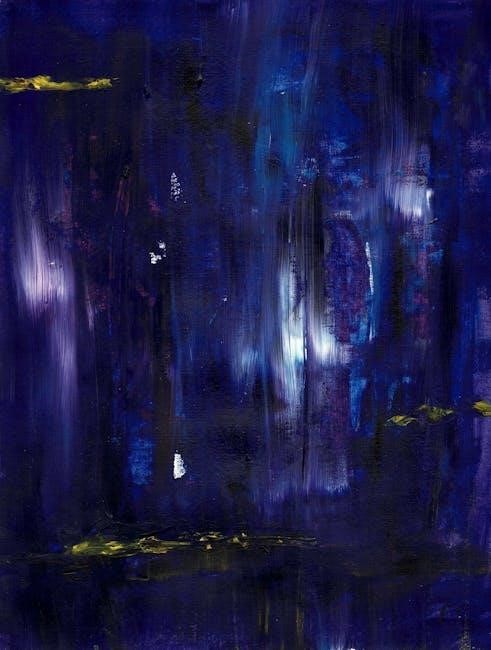
Care for Dyed Fabrics
Wash dyed fabrics separately in cold water with mild detergent to prevent color bleeding. Air-dry or use low heat to maintain vibrancy. Avoid harsh detergents and excessive ironing to preserve quality and color integrity.
Washing Dyed Fabrics
Wash dyed fabrics gently in cold water using a mild detergent to preserve vibrant colors. Avoid soaking or using bleach, as it may fade or damage the dye. Turn items inside out before washing to protect the outer layer. Gently agitate by hand or use a delicate cycle in a washing machine. Rinse thoroughly to remove excess dye residue. Air-dry or tumble dry on a low setting to maintain color intensity and fabric integrity over time.
Drying and Ironing
Air-dry dyed fabrics away from direct sunlight to prevent fading. Avoid high heat from dryers, as it may weaken the dye bond. If machine drying, use a low setting and remove promptly to prevent wrinkles.
Iron dyed fabrics on a low setting while slightly damp for best results. Use a pressing cloth to protect the fabric. Avoid scorching, as it can damage both the fabric and the dye. Proper drying and ironing preserve color vibrancy and fabric integrity for long-lasting results.
Storage Tips
Store dyed fabrics in a cool, dry place away from direct sunlight to preserve color vibrancy. Fold neatly and keep in a clean, dry cotton bag or breathable container. Avoid plastic bags, as they can trap moisture. For longer storage, ensure the fabric is completely dry and free of wrinkles. Proper storage helps maintain the integrity and color of your dyed fabrics for years to come.
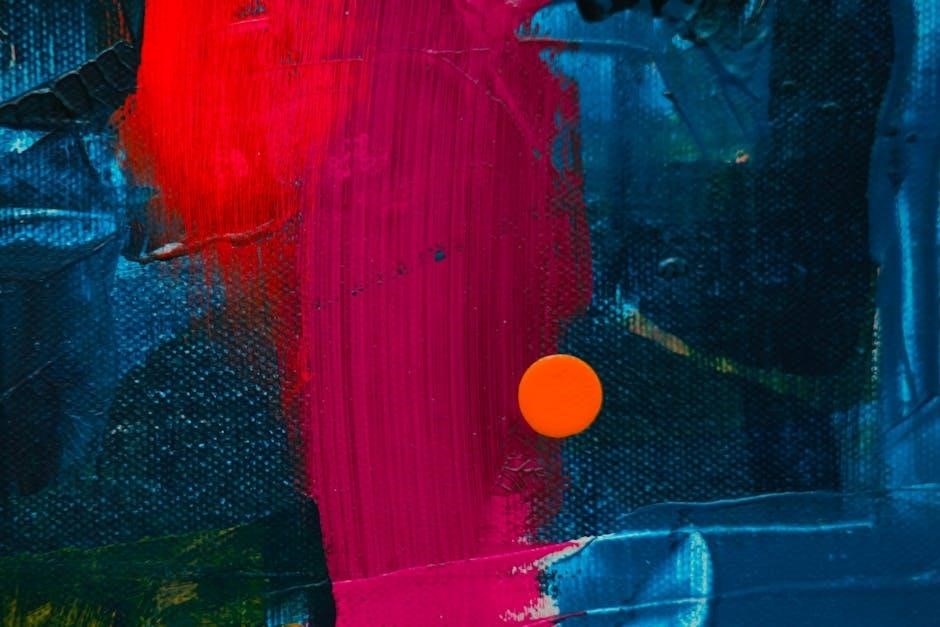
Troubleshooting
Common dyeing issues include uneven color or bleeding. Adjust agitation, temperature, or dye quantity to achieve desired results. Consult specific guides for detailed solutions.
Common Issues
Common challenges in Procion dyeing include uneven color distribution, insufficient color saturation, and dye bleeding. These issues often arise from incorrect measurements, inadequate soda ash preparation, or improper soaking times. Additionally, using too little dye or insufficient agitation during the dyeing process can lead to faded or patchy results. Ensuring accurate measurements and proper technique helps mitigate these problems. Always refer to specific guidelines for optimal outcomes with Procion MX dyes.
Solutions and Tips
To address common dyeing issues, ensure accurate measurements of dye and soda ash. Pre-soak fabrics thoroughly in soda ash solution for optimal color bonding. For vibrant results, maintain consistent water temperature and agitation. To prevent uneven colors, avoid overcrowding the dye bath. For pastel shades, reduce dye quantity. Test colors on small fabric samples before applying to larger projects. Using gloves and protective gear minimizes skin staining. Follow instructions carefully for consistent, professional-quality outcomes with Procion MX dyes.
Advanced Techniques
Explore resist methods, layering colors, and natural dyeing for unique fabric designs. These techniques enhance creativity, offering sophisticated results for experienced dyers with Procion MX dyes.
Resist Methods
Resist methods involve folding, binding, or applying substances to fabric to block dye absorption, creating unique patterns. Techniques like tie-dye, shibori, or folding fabric tightly before dyeing ensure vibrant, intricate designs. Using wax or starch as resist agents can also achieve striking effects. These methods allow for creative control, resulting in distinctive, multi-dimensional color layouts. Experimenting with different resist techniques can elevate your dyeing projects, offering endless possibilities for artistic expression with Procion MX dyes.
Layering Colors
Layering colors with Procion MX dyes creates depth and complexity. Apply the first color, allow it to set, then add subsequent layers for multi-dimensional effects. Start with light shades and gradually build to darker tones for vibrant results. Experimenting with color theory can enhance your designs. Ensure each layer is fully absorbed before adding the next to avoid muddling. This technique works well with immersion or direct application methods, offering endless possibilities for artistic expression and unique fabric designs with Procion MX dyes.
Natural Dyeing
Natural dyeing with Procion MX dyes involves combining natural materials like leaves, flowers, or herbs with the dye for unique, organic patterns. Soak fabric in soda ash, then apply natural elements directly. Use binders or mordants to enhance color retention. This eco-friendly method creates distinctive, earthy designs. Experiment with different plants and techniques to achieve varied effects. Natural dyeing aligns with sustainable practices and offers a creative twist to traditional Procion dyeing methods, producing one-of-a-kind textile art.
Project Ideas
Explore creative projects like tie-dye shirts, shibori scarves, or ice-dyed home decor. Create unique gifts, such as hand-dyed fabric wraps or custom clothing. Experiment with vibrant patterns and colors for personalized textiles. These projects are perfect for crafters and DIY enthusiasts looking to add a personalized touch to their creations.
Home Decor
Procion dyes can transform home decor items like tablecloths, pillowcases, and curtains into vibrant, unique pieces. Use immersion dyeing or tie-dye techniques to create striking patterns. For a modern look, try ice dyeing or shibori methods on fabric. Experiment with layering colors to achieve deep, rich shades. Natural fibers like cotton and linen work best. Add a personal touch to your space with hand-dyed napkins, scarves, or wall hangings. These projects make great gifts or additions to your home decor collection.
Clothing and Accessories
Procion dyes are ideal for transforming clothing and accessories into unique, hand-dyed pieces. Use immersion dyeing for solid colors or try tie-dye and shibori for intricate patterns on shirts, dresses, and scarves. Direct application with brushes or spray bottles allows for personalized designs. Layering colors and resist methods can create complex, multi-tonal effects. These techniques work beautifully on natural fibers like cotton, linen, and rayon, ensuring vibrant, long-lasting results. Dyeing your own clothing and accessories offers a creative way to refresh your wardrobe with one-of-a-kind styles.
Gift Ideas
Procion dyes are perfect for creating personalized gifts, such as hand-dyed scarves, bandanas, or tea towels. Customize these items with unique patterns using techniques like tie-dye or shibori. For a more intricate look, try layering colors or using resist methods to create multi-tonal designs. These gifts are not only thoughtful but also eco-friendly, as Procion dyes work best with natural fibers and soda ash, ensuring durability and sustainability. Perfect for birthdays, holidays, or special occasions.
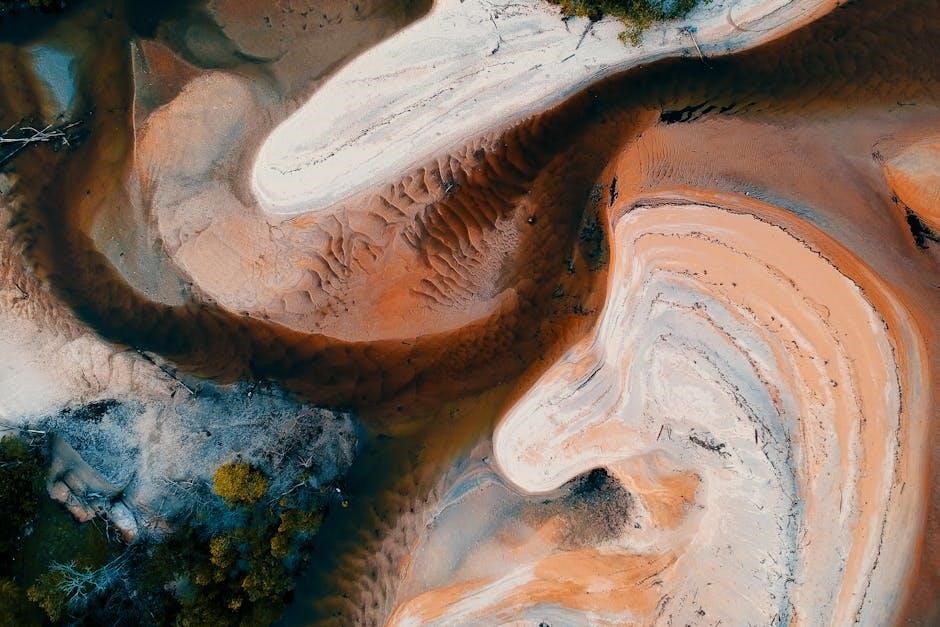
Safety and Environment
Procion dyeing requires proper safety measures, including gloves and masks. Dispose of dye materials responsibly to protect the environment and water systems from contamination and harm.
Disposal of Dye Materials
Proper disposal of Procion dye materials is essential to protect the environment. Neutralize dye baths with vinegar before disposal to prevent water contamination. Dispose of leftover dye powders and soda ash in sealed containers. Do not pour dye or soda ash solutions directly into drains, as they can harm aquatic life. Clean tools and surfaces thoroughly to avoid residue. Always follow local regulations for hazardous waste disposal to ensure eco-friendly practices and minimize environmental impact.
Eco-Friendly Tips
Adopt eco-conscious practices when working with Procion dyes. Opt for natural fibers like cotton and linen, which are biodegradable and require less synthetic treatment. Use minimal water and consider reusing dye baths for smaller projects. Choose non-toxic fixatives like vinegar instead of chemicals. Dispose of excess dye responsibly and recycle materials whenever possible. Additionally, explore natural dyeing methods to complement Procion dyes, creating sustainable and environmentally friendly fabric designs. These practices help reduce waste and promote greener textile artistry.
Procion dyeing offers endless creativity and versatility for fabric projects. With proper techniques, you can achieve vibrant, long-lasting results while exploring eco-friendly practices and innovative methods.
Procion MX dyes are highly effective for achieving vibrant, permanent colors on natural fibers. They require soda ash for binding and offer excellent colorfastness. Proper preparation, including soaking fabric in a soda ash solution, ensures optimal results. Techniques like immersion dyeing, tie-dye, and direct application allow for creative expression. Mixing colors and understanding color theory can expand your palette. Following safety guidelines and eco-friendly practices enhances the dyeing process. With patience and practice, you can create stunning, professional-quality dyed fabrics using Procion dyes.
Encouragement and Next Steps
With these instructions, you’re ready to unlock the creative potential of Procion dyes! Start with simple projects and gradually experiment with advanced techniques like layering or resist methods. Practice makes perfect, so don’t hesitate to try new ideas. Explore tutorials and online communities for inspiration and tips. Remember, every dyeing project is a unique opportunity to express your creativity. Keep experimenting, and enjoy the rewarding process of transforming fabrics into vibrant, one-of-a-kind pieces!
